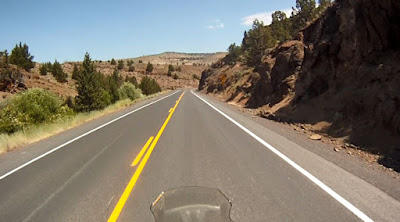Barely two months had passed since the Pearl Harbor attack when on February 19, 1942, President Franklin D. Roosevelt issued
Executive Order 9066. This order forced the relocation of 110,000 people of Japanese ancestry to ten prison camps scattered across the United States. Two-thirds of these civilians prisoners were American citizens. They were stripped of their freedom, businesses, homes, and personal property without due process of law. The Minidoka War Relocation Camp was one of these prisons.
Located in the remote high desert, approximately 17 miles northeast of Twin Falls, Idaho. The Minidoka camp was a 33,000-acre
site where over 13,000 civilian men, women, and children were held. They were not guilty of a crime, but they looked like "the enemy." The camp reached a peak population of 9,397 on March 1, 1943 and was the 7th largest "city" in Idaho. Very little of the original installation remains.
The Minidoka National Historic Sight is managed by the National Park Service. The Park Service works to preserve what remains of the original camp as a solemn reminder of government policies' impact on citizens. Near the entrance a reconstructed
guard tower stands watch over the parking lot and not far from the remains of the original military police building.
The day we visited was sunny and warm, making for a nice walk along the 1.6 mile self guided tour with very informative historical information posted in many places. The signs detail the lives of the people once held here. But, the nice weather did not dispel the quiet and lonely feeling out here with the wind whistling across barren fields.
Along the walking tour a few bare concrete slabs and crumbling foundations show where the original buildings once stood. Continue following the path as it parallels a gravel road and you will find the Visitor Center. The building looks like a house, but inside are many many interesting pictures and informative displays.
While the camp was in operation 5 miles of barbed wire fencing and eight guard towers surrounded the prisoners. Living conditions were primitive with pit toilets when the first prisoners arrived. The living quarters were long wooden and tar paper barracks divided into six "apartments."
The Idaho summers were very hot and dusty as the prisoners farmed the local desert to grow sugar beets and produced enough food to share with other camps. The people here also organized schools, churches, and barbers shops. Winters were cold and windy with little comfort for those denied their rights and forced to live in such substandard conditions.
Along the walking tour a few bare concrete slabs and crumbling foundations show where the original buildings once stood. Continue following the path as it parallels a gravel road and you will find the Visitor Center. The building looks like a house, but inside are many many interesting pictures and informative displays.
"I want to forget the day we were herded into a prison camp. What did we do wrong? What was our crime?" -Sylvia Kobayashi
The camp officially closed October 28, 1945 and was listed in the National Registry of Historic Places on July 10. 1979. Today, it remains a stark reminder of a dark period in American history. A time when the nation fought to defend the same values and rights that were denied the innocent prisoners held here. The site is worth visiting, and learning it history so that future Americans will not repeat the mistakes of the past.







































